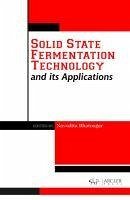
Plasmonics: Properties, Synthesis and Applications
Versandkostenfrei!
Versandfertig in über 4 Wochen
152,99 €
inkl. MwSt.

PAYBACK Punkte
76 °P sammeln!
Materials which are scaled to nanometers i.e. nanomaterials exhibit unique properties such as subwavelength wave guiding, tripping and filtering of light etc among other exclusive properties. Plasmonic nanostructures supporting surface plasmon polaritons show great potentials in many application fields and therefore attract an explosive growth in research. Plasmonics are associated with guiding the light along metal surfaces or within films which are nanometer-thick. When the free electrons present in the lattice of metal atoms interact with the incident light, they oscillate and this fluctuat...
Materials which are scaled to nanometers i.e. nanomaterials exhibit unique properties such as subwavelength wave guiding, tripping and filtering of light etc among other exclusive properties. Plasmonic nanostructures supporting surface plasmon polaritons show great potentials in many application fields and therefore attract an explosive growth in research. Plasmonics are associated with guiding the light along metal surfaces or within films which are nanometer-thick. When the free electrons present in the lattice of metal atoms interact with the incident light, they oscillate and this fluctuation of electron density constitute the plasmon wave. Plasmonics are touted to revolutionize data transfer in smartphones and computers as data transfer is facilitated using light-like waves unlike their counterparts which rely on flow of electrons for data-transfer, thereby enabling data-transmission super-fast. The sensitivity of the surface plasmons with the neighbouring material makes them ideal candidates for biological and chemical sensors. Furthermore they are also employed in optical superlenses with exceptionally high resolution.This book is a compilation of research articles and reviews illustrating the application of plasmonics in diverse fields. Chapters 1 and 2 showcase articles and reviews of application of plasmonics as sensors for disease, gas, liquid, refractive index. While chapters 3-9 illustrate the various strategies and fabrication techniques of plasmonic materials and devices. Since size and structure of the nanomaterials have remarkable impact on their unparalleled optical and electrical properties these technologies and strategies form significant chapters of this book. A comprehensive analysis of plasmonics-Based GaAs MSM-Photodetector has been elucidated in chapter 10. It also entails finite-difference time-domain (FDTD) algorithm to investigate the dependence of light absorption on subwavelength nanogratings. Whereas chapters 11, 12 and 13 are review articles on the application of plasmonic materials in optical lithography, anti-reflective coatings and in enhancing Raman scattering, respectively. An intriguing review on recent advances in utilizing field enhancement of surface plasmon polaritons nanostructures for subwavelength waveguiding, strong polarization-handling, efficient heating and detection, high-sensitivity optical sensing, etc. has been incorporated as chapter 14 of this book. In chapter 15, a review of the employment of topological insulators exploiting plasmons for superior performance as thermo-plasmonics, THz magnetoplasmonics, UV plasmonics, has been illustrated. Furthermore the properties and application of titanium based plasmonic materials have also been highlighted in chapters 16, 17 and 18. In chapters 19 and 20, the employment of plasmonics in harvesting solar energy has been explained. Such strategies and technologies play a vital role in improvising the existing technologies to achieve unparalleled outcomes. However considerable conscientious efforts need to be made to comprehend the underlying principles and potential of these plasmonic materials. This book will provide the reader with valuable information and strategies to extend his knowledge on the existing technologies and to draft novel approaches that would enhance the efficacy of current technologies.












